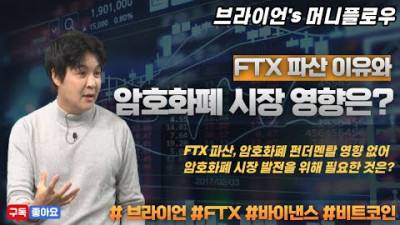A Simple Plan: Building Bags via 1) Portfolio Selection, 2) Mining and 3) DCA
작성자 정보
- 레딧 작성
- 작성일
컨텐츠 정보
- 138 조회
- 0 추천
- 목록
본문
![[IMAGE]](https://b.thumbs.redditmedia.com/h-DvxEUvOt15gCN7sjDFsQA-PWPNcJ-hIJ4VZKtXhRM.jpg) | A lot of people coming online in this sub will find a lot of recommendations. What coins to buy, when to do it, what industries etc. The problem is those are all scattered pieces of a larger picture. I wanted to give a possible consideration of a simple strategy that I am moving towards in the last few months. Here are the basic core elements:
All of the long time investors and crypto hodlers will laugh at how obvious some of this stuff is. But the truth is, there is so much weird chatter on this channel that a lot of clear and core ideas seem to be ignored. All I am doing here is giving my own "self-story" of how I do this. It is not what everyone can or should do. I am not providing advice, just an outline sketch of one idea- the outline I use. If it helps great. If you can steal parts of the ideas here to help yourself. Do it. Just read through this and see if it helps you in adding to your overall knowledge on crypto, and how to approach investing in it. FundingInvestment funding: first, I decided that I don't want to invest additional money streams from my regular income to build my crypto portfolio. Instead, I decided to make an initial investment in building a mining rig, that would produce monthly income. Sounds simple enough. But it is not. It requires some work. It is also not truly feasible if you are not a tech savvy person. That said, if you know how to build your own PC, you can build a mining rig. There are several communities in reddit that can help you with learning how to build a mining rig. This is how I learned how to build my rig. Here is what my rig looks like in its present state. I have 7 GPUs mining crypto on this rig: After building my rig, I had to choose what software to mine with. In my case, I am currently just using a service called NiceHash.com since it is simple and easy to get started. In the future, I may move to HiveOS and mine more directly, but for now this is clean and easy. For help with building your own mining rig, understanding how to use it, and setting up the software, I recommend the following resources:
Monthly income: Many may wonder, how much will this kind of thing produce? In my simple case, the rig will bring in from 800 - 1000 per month, minus electricity costs (about $150 per month). I have been building this rig very slowly and been turning it off and on, getting my settings just right. Here is a sample of the report NiceHash produced for me as I was testing and building my rig: Of course, this rig has not been run 100% 24/7 for an entire month. Once I complete my setup the regular 800/1000 income is the estimate. The important thing here isn't the exact amount, but the regular, steady income. The net income I get from this rig will be what I use to fuel my crypto investment. But again, this is just part of my story- I decided to make an initial investment into a mining rig that will be the source of future investments. This isn't for everyone. You need to know that mining changes over time. Some coins (like ETH) are switching from POW (mining) to other kinds of operation. This means some coins will not be minable in the future (like ETH). You have to understand that and understand how to mine other coins or how to switch to other ways of mining if you want to stay doing this. Don't choose mining if you aren't ready to take on the technical and time challenges of staying with it. Selection & ResearchResearch: How someone purchases crypto should not be done without some forethought. To do research, you need to find places that can provide you with helpful understanding of crypto in various ways. I will list some resources to consider and some crypto categories that I use. Resources One thing I highly recommend is that you do some good research on credible YouTube channels. My three favorite channels are:
Portfolio Groups In addition to those resources, you need to decide what kind of strategy you want to employ in purchasing crypto. For myself, I am looking at building a portfolio that contains 3 things:
I chose those 3 ways of grouping my crypto investment targets because I think they represent a good slice of what makes crypto valuable, unique and especially where its future growth lies. Core Crypto
Strategic Blockchain Ecosystems/Technology
Metaverse / Gaming
The above groups and cryptos are things I settled on for my initial portfolios. They are not the only ones I have invested in. For example, I held Cardano (ADA) for several months. But the more I learned about this, the more it was clear to me that it will not be the future of crypto. Other solutions (like Solana) have already proven to be better technical solutions and with a much better adoption rate. What you see above is just my current thinking, and it will remain dynamic as I continue to learn and build confidence in understanding the underlying value in these and other projects. Of course, you don't have to come up with the same groupings I did. But when you have done your research, come up with things you believe in. PurchasingMy general strategy for purchasing is DCA - dollar cost averaging. This simply means that you invest a given amount of money on a regular basis into the same selected asset. I personally take a two-pronged approach:
When to change the selected asset? Currently, I am investing in AVAX (Avalanche) and MATIC (Polygon). But I won't keep my DCA target on these coins forever. Instead, I will use a purchase limit to stop my DCA target of these assets and move to another asset in each case. For example, I will probably move my purchase of AVAX over to Polkadot in the near future. Likewise, once I reach my purchase limit on MATIC I will move the target to more Sandbox. How do I determine what to buy next? Three things:
For example, I am about to DCA into Sandbox as my next selection. The reason is that the entire market has been down, and SAND is in a unique position of being a top Metaverse/gaming coin that is at a discount due to the recent sell off. This is easy to see when you look at the price charts for SAND. Below, are the 1 month, 1 week and 1 day price charts for SAND. This shows you how the coin has a recent decline (market flush). But it also shows you that in up sentiment the coin trends up quickly (see 1 day chart). SAND is one of the top metaverse plays. I believe it will be worth many multiples of its current price as mainstream adoption takes hold. Resources for DCA and purchasing based on comments to the post, I am adding the info on what apps I use to DCA.
Final thoughtI highly encourage you to consider coming up with your own plan for crypto. Perhaps some of these ideas will help you. I hope so. Also, if you have any feedback regarding anything my post, please share a comment and I will update the post with your feedback if applicable. Thanks for making this a great community! [link][comments] |
관련자료
-
링크



















